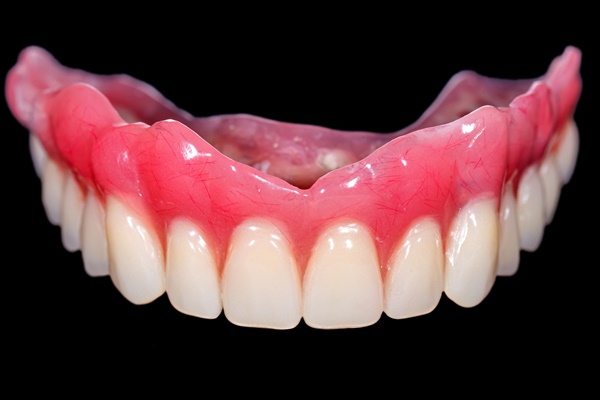


1:Before the procedure
The dentist determines what needs to be done and prepares both himself and the patient for the coming treatment procedure.
Services: Prosthodontics
Prosthodontic Dentistry
Prosthodontic Dentistry or Prosthetic Dentistry treats missing teeth or treats existing teeth that have significant damage. Restorations are used to replace or restore missing teeth or missing parts of the tooth structure.
- Dental Implants
- Dental Crowns
- Dental Bridges
- Dentures
- Dental Fillings
Benefits of Prosthetics
The benefits of fixing missing teeth include:
- Prevents exisiting teeth from drifting into surrounding space of the missing teeth
- Teeth out of position can damage tissues in the mouth
- The difficulty of thorough cleaning between crooked teeth runs the risk of tooth decay and periodontal (gum) disease that can lead to the loss of additional teeth.
- Improves out your smile
- Helps to properly chew food
- May improve speech
- Prevent a sagging face by providing support for lips and cheeks
Types of Restorations
Dental Implants
Dental Implants are replacement tooth roots. Implants are actually a small post made of metal that are placed into the bone socket where teeth are missing. The implant is covered with a replacement tooth called a crown.
Dental Bridges
Bridges are false teeth that are designed to bridge the gap created by one or more missing teeth. Bridges can be anchored on either side by crowns and cemented permanently into place.
Dental Crowns
Crowns are a tooth-shaped cap that is placed over a tooth to restore its shape and size, strength, appearance, to hold a bridge in place or cover a dental implant.
Dentures
Dentures are a removable replacement for missing teeth and surrounding tissues. They are made of acrylic resin or metal typed. Complete dentures replace all the teeth. Partial dentures replace missing teeth retained by metal clasps attached to natural teeth.
Dental Fillings
Fillings are the most common type of dental restoration. Teeth can be filled with gold, silver amalgam, or tooth-colored, plastic and glass materials called composite resin fillings.
Dentures
Dentures
A denture replaces missing teeth and adjacent tissues. Unlike dental implants, a denture is removable.
Benefits of Dentures
- Prevents exisiting teeth from drifting into surrounding space of the missing teeth
- Teeth out of position can damage tissues in the mouth
- Helps to chew food
Types of Dentures
Complete Dentures
Complete dentures or Full dentures are used when all the teeth are missing . Complete dentures can be either “conventional” or “immediate”. The framework of complete dentures may be made of resin, metal or a combination.
Implant supported overdentures are an alternate to conventional dentures whereby a full dentures is placed over the dental implants with metal bar/balls that gives better retention.
Partial Dentures
Partial dentures are used when some natural teeth remain.
A removable partial denture usually consists of replacement teeth attached to a pink or gum-colored plastic base, which is connected by metal clasps or precision attachments that holds the denture in place in the mouth. Precision attachments are generally more esthetic than metal clasps and they are nearly invisible.
Conventional Dentures and Immediate Dentures
Conventional Dentures are made after the teeth have been removed and the gum tissue has begun to heal. Conventional dentures is ready for placement in the mouth about 8 to 12 weeks after the teeth have been removed.
Immediate dentures are made in advance and can be positioned as soon as the teeth are removed. As a result, the wearer does not have to be without teeth during the healing period. However, bones and gums shrink over time, especially during the healing period following tooth removal therefore immediate dentures would usually require more adjustments to fit properly during the healing process and generally should only be considered a temporary solution until conventional dentures can be made. The healing process as it can take months for your bone and tissue to stabilize after tooth extractions.
Procedure for Conventional Dentures Treatment
1.First Evaulation and dentures site preparation
if tooth extraction is required, the teeth are extracted and left to heal
2. Making the dentures
Once the gums are healed and healthy, an impression of the mouth is taken for a wax-up
- The wax-up is used to determine the most optimal position of the jaw and teeth dimensions (size, shape, length, width)
- The wax up is sent to a dental laboratory to construct a “try-in” set of denture
3.Trial of “try-in” set of dentures and re-adjustments
- The “try-in’ denture are placed in the mouth to assure comfort, fit, bite position and appearance
- The “try-in” dentures are re-worked in the labs and trail fitted during next visits until the color, shape and proper fit is obtained for the final set of dentures to be cast
- 4.Fitting of final dentures
For immediate dentures, impression-taking and the wax-up is first done before tooth extraction.
Recovery Expectations
Recovery from getting dentures may be a two-step process. If extractions are necessary, patients can expect the recovery of their gums to take up to 4 weeks or longer.
Once healed and the dentures are placed, the patient will need time to adjust to the new teeth. While patients can speak normally within a few hours, they may experience minor discomfort when eating or chewing. This discomfort may last from several days to a few weeks until the muscles of your cheek and tongue learn to keep them in place and you get comfortable inserting and removing them. It is recommended that patients with new dentures eat soft foods until they become comfortable with chewing.
it is not unusual for minor irritation or soreness to occur and for saliva flow to increase when you first start wearing dentures, but these problems will diminish as your mouth adjusts to the new denture.
Care for Dentures
- Dentures should be removed at night to give the gums a rest and to reduce the pressure on the underlying bone or as directed by your dentist
- Regular denture care includes brushing your denture with a denture brush and a denture paste after eating. Dentures can collect plaque and food stains
- Keep your dentures in water to avoid drying out and distorting.
- Dentures can and may break if dropped onto a hard surface, thus becareful when handling them.
- Clean and massage your gums and tongue with a regular soft-bristled toothbrush to help keep them healthy
Benefits of Full Arch Implants with Overdentures
- Denture stablized with implants
- Possible to use existing dentures
- Removable
- Simple and Inexpensive
- Offers a long-lasting solution, often for life
- Renewed confidence and improved quality of life as well
Installing Full Arch Implants with Overdentures
The course of treatment described here is one of several options available. Consult your dentist to find out what the best solution is for you, given your specific condition.
1:Before the procedure
The dentist determines what needs to be done and prepares both himself and the patient for the coming treatment procedure.
2. Installing the implants
The first step is installing dental implants to replace the lost tooth roots. In this case, two implants are used. Four implants may be placed in cases for added overdenture retention. Temporary dentures may be worn that enable you to eat and function like normal while waiting for the permanent overdenture to be installed.
3. Attaching ball/bar and making overdentures
A ball or bar is then attached on top of the implants and the overdentures installed over. The ball or bar acts as a clip that enables the overdentures to snap securely in place.
4. End result
The removable overdentures are securely clipped on top of the implant with the ball/bar giving the strength and stability that allows you to better than with conventional dentures.
Full Arch Fixed Bridge Implants
Benefits of Full Arch Implants with Fixed Bridge
- A fixed permanent restoration for individauls who has lost all their teeth
- Lets you eat and function like having natural teeth
- A solid, stable solution relative to dentures
- Preserves your facial appearance and prevents bone loss
- Immediate Function in mandible and maxilla
- Gives a nice natural smile, better esthetic relative to dentures
- Offers a long-lasting solution, often for life
- Renewed confidence and improved quality of life as well
Installing Full Arch Implants with Fixed Bridges
The course of treatment described here is one of several options available. Consult your dentist to find out what the best solution is for you, given your specific condition.
1:Before the procedure
The dentist determines what needs to be done and prepares both himself and the patient for the coming treatment procedure.
2. Installing the implants
The first step is installing dental implants to replace the lost tooth roots. The number of implants placed is dependent on bone condition and the implantologist judgement. If conventional implants are done, temporary dentures can be opted to be made or your old dentures may be worn that enable you to eat and function while the implants are left to heal and integrate with the jaw bone.
3. Attaching the bridge
The final step is the making and securely installing the fixed bridge on top of the implants.
4. End result
Your new teeth should be hard to tell from natural – both for you and others. People who have had traditional dentures before getting a fixed bridge often describe this as an overwhelming and very positive experience.
